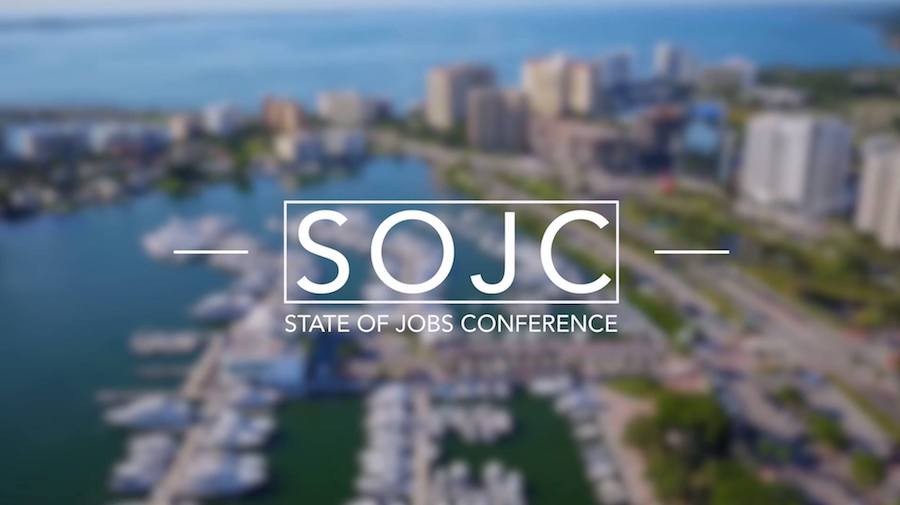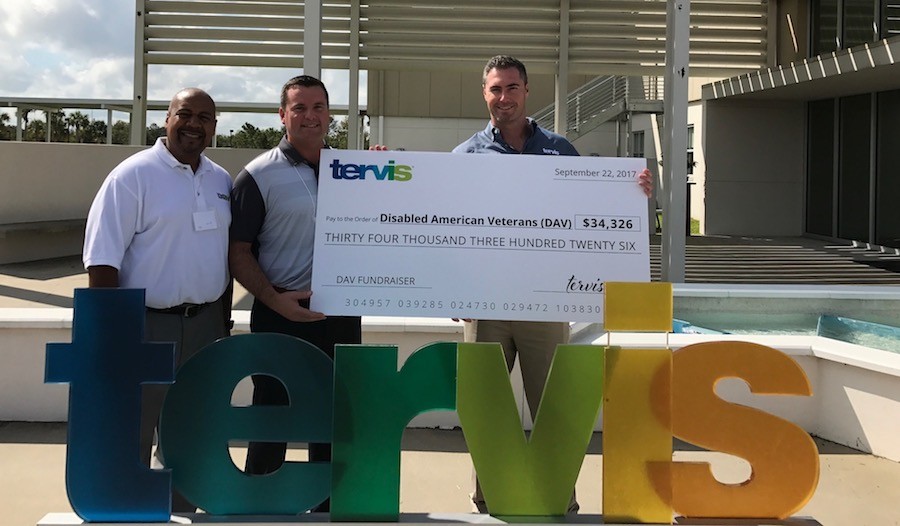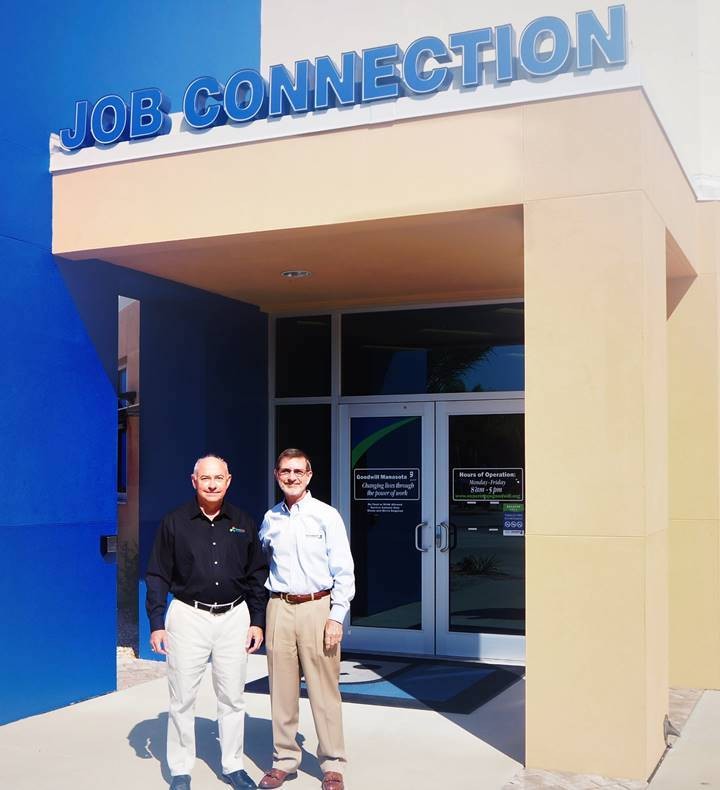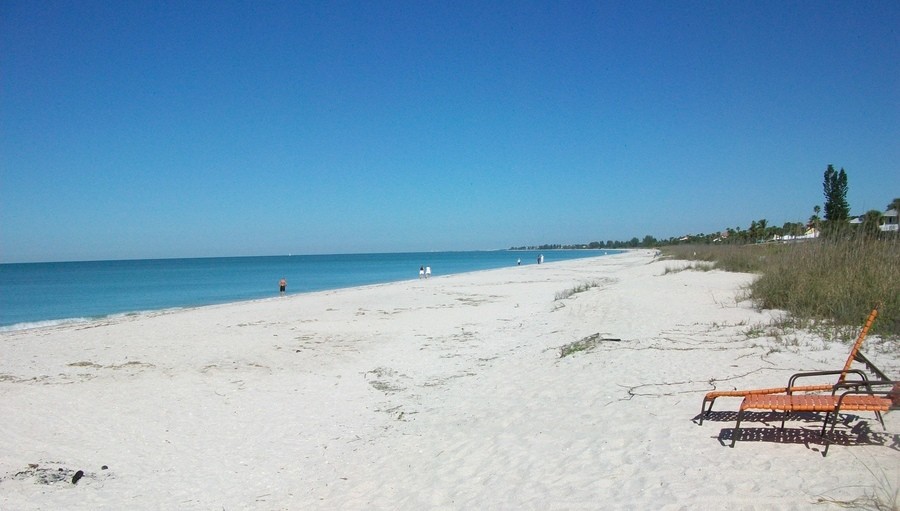SRQ DAILY Sep 23, 2017

"The lessons learned in preparing for and recovering from Hurricane Irma for a college can also be applied to our daily lives."


“So do you have power at your place?” It’s the question we all get asked, and as of Friday, the answer should be “Yes” for virtually all residents of Sarasota and Manatee counties. Florida Power & Light issued a press release Friday announcing lineman restored power for “essentially all” the 4.4 million customers in their service boundary that suffered a blackout because of Hurricane Irma.
Now comes the important question of what could be done better when the next storm arrives. Can we ensure restoration comes quicker? Could we employ measures like undergrounding wires to prevent outages from occurring at all?
The second question has fascinated me since 2004, when four hurricanes hit Florida in a single season. I lived in Central Florida at the time, where Frances and Jeanne would be most remembered. My hometown of Leesburg decided afterward to start burying all power lines to prevent blackouts in the future. It worked fairly well—my parents lost power for all of 8 hours when Hurricane Irma ripped through. So why haven't companies in this part of the state, particularly in coastal areas, put more wires underground?
The solution, as always, is harder than it sounds. Bill Orlove, FPL spokesman, says the company happily works with developers and communities that want new power lines to go in the earth instead of overhead. Longboat Key has been assessing the costs of undergrounding utilities for a little more than a year.
But it’s a costly move to retrofit communities, and Orlove notes that the project doesn’t eliminate the impact of a storm. “No energy company can make a grid hurricane-proof,” he says.
Of course not. Most people who aren’t in the midst of a 10-run without a refrigerator and who aren’t washing hands with bottled water because the pump outside doesn’t work realize that. Some outages inevitable happen when 100-mph wind gusts come to town.
What are the problems with undergrounding? For one, floods. Our region avoided storm surge this storm, thankfully. Had Irma hugged the coast, we’d have seen several feet of surge, like that experienced in Naples. And had the storm maintained its strength, we could have seen severe flooding. Underground wires would be prone to damage, and it would be harder to detect where the problems were in the circuit, as opposed to being able to look outside and see a tree branch that tore down a line.
Which gets back to the problems with having wire overhead. Particularly in a community like this one that loves its foliage, there’s a lot of trees that can get felled into power lines. Orlove says FPL has made sure to bury or to “harden” 40 percent of main power lines, meaning those that feed the regional grid. Hardening means reinforcing the high wires to better withstand forceful hurricane winds. And over the past 11 years (since Hurricane Wilma), FPL has trimmed back trees along 9,670 miles of Sarasota County and 5,330 miles in Manatee.
Sarasota County Commissioner Paul Caraigiulo, who issued updates on power restoration on Facebook after the storm and went without power for nine days himself, says treebranch removal will have to be a conversation now, and a tough one in a place where people love their greenery. He’s not convinced undergrounding is the simple answer, at least not everywhere, noting than on Longboat, it looks like it will cost more than $800 a foot to underground the island. So is this a fight between expense undergrounding or cutting back our canopies? That will be a difficult conversation, for sure.
To be fair to FPL, the company did its best to manage expectations at a stressful time. Early on, the power company told the public power would be restored by Sept. 22, the day they announced completion. And Orlove notes this storm, unlike any other in the company's history, impacted customers in all 35 counties where FPL does business. The company believes this work to be fastest restoration ever of so many people by a single utility.
Then again, this storm ended up being much less vicious than forecasters expected (outside the Florida Keys, which took a hard hit). Someday, a worse storm will impact the community. A cost will be paid one way or another, either in costly prep now or painful recovery afterward.
Jacob Ogles is contributing senior editor to SRQ Media Group. 


A County program that loans money for energy-efficient improvements sounds like a good thing, but is it a scam? The Property Assessed Clean Energy, or PACE, program ordinance comes up a vote before the County Commission next Tuesday. The experience of other U.S. communities shows the PACE program is often a wolf in sheep’s clothing, disrupting lending standards by putting PACE “super liens” on homes, which then make it difficult to sell or refinance.
What is the PACE program? PACE permits private lenders to sell loans to homeowners or businesses for the purpose of adding energy efficient improvements—like windows or roof replacements—to their property. PACE loans are different because they are secured by a property tax lien and are collected through the property tax bill. According to the National Consumer Law Center, “typically PACE loans are first-priority liens that jump ahead of existing mortgages.” NCLC also says “many localities fund the program by issuing bonds linked to homeowner tax payments. These bonds are then sold to a private company that securitizes them and sells them on Wall Street. The local government often receives a fee for participating.”
Homeowners who go to sell their property may find that a PACE loan is an obstacle to the sale. When there's not enough equity to pay off both the mortgage and the PACE loan in full, the mortgage holder objects to taking a loss by being paid after the PACE lien is satisfied—something they never consented to in the first place. The buyer’s mortgage lender may object to being second in line for payment behind a PACE lien that remains attached to the property. Without satisfying the mortgage lender(s), the transaction cannot proceed. Ensuing legal hassles have prevented transactions with PACE loans attached from closing.
Other problems with PACE loans include door-to-door and phone solicitations, which can be signed electronically on the spot, with no ban on kickbacks or rules for broker compensation to avoid conflicts of interest. There may be no assessment of the property owner’s income or ability to pay & no right to cancel. Low income consumers who quality for lower-cost programs may be signed up. PACE loans typically charge 8-9 percent interest, plus a fee, which can add thousand of dollars per year to the property tax bill for 5, 10 or even 20 years, with no required energy audit and concrete evidence of savings.
The County staff memo on PACE recommends strong consumer protections, but the proposed ordinance fails to protect property owners from the fundamental problem: PACE liens taking priority over mortgage loans. The ordinance states: “the risks associated with participating in the PACE program shall be clearly disclosed… including the risks related to the failure of the eligible Participant to make payments, the risk that they may not be able to refinance the home or sell the home unless the PACE assessment is paid off in full first.” So much for strong consumer protection.
The National Consumer Law Center warns: “PACE has few consumer protections. Expensive loans that are often pushed by aggressive contractors for projects with questionable savings pose serious risks of predatory lending. Reports are already surfacing of problems that mimic the home equity scams and subprime abuses of the 1990s and 2000s.” Sarasota County must not act as a conduit for loans with put their constituents property at risk through Wall Street’s latest real estate security game. 

Our students are back on campus and normal routines have returned to the State College of Florida, Manatee-Sarasota, after Hurricane Irma. While it is great to move forward, it is important to take a look back and reflect on the things that allowed us to recover quickly. The lessons learned in preparing for and recovering from Hurricane Irma for a college can also be applied to our daily lives.
Classes at all three campuses resumed Sept. 18, but staff and faculty returned to work Sept. 15 to revise academic schedules and test equipment in preparation for our students’ return. Thanks to the extraordinary efforts of our facilities team members who worked tirelessly to clear up downed trees and debris, each campus was quickly returned to a safe environment for students and employees. A quick recovery is also due in large part to our annual preparation for hurricane season.
Our region has been spared the “big one” for many years. Tropical storms and hurricanes are a fact of life in Florida, however, and there are numerous steps we take every year to prepare for the June to November season. We make sure trees are kept trimmed and gutters and storm drains are cleared. We also ensure that all the supplies needed for a hurricane—sand bags, fuel, etc.—are on-hand before the season starts. Contracts are always in place to bring in the resources required to assist in clean up and repairs.
Planning and communications were also critical before, during and after the storm. SCF’s Critical Incident Management Team began to meet when Irma was still well out in the Atlantic Ocean to discuss storm preparations, communications with students, faculty and staff, and contingencies if the college had to close. We were in constant contact with local and state officials to ensure we were in concert with community and statewide actions. On a conference call with Florida’s college presidents, Gov. Rick Scott encouraged us to make our decisions early to give everyone the most time possible to prepare.
The closing date we selected took into account giving students and employees time to prepare their houses for the hurricane and families for evacuation or riding out the storm. Each individual had to make the decision that was best for them—as a college, we had to responsibly close to allow everyone the time to safely carry out their plan.
As I visited with staff and faculty on their first day back it was a relief to know that everyone had come through the storm in good shape and that our campuses were safe for students to return. Our department leadership did a fantastic job checking on our employees and accounting for everyone through evacuations and power loss. It was encouraging to see that we were prepared to get back to our mission of educating students. Every academic department I visited already had a plan in place to help students get back on track on the following Monday.
Hurricane season is with us every year, and we will never overlook the potential impacts. We plan and prepare each year to ensure our campuses are prepared, and we translate those lessons to our homes. As we move on from Irma, and hopefully avoid any other massive storms this season, I encourage you to remember to lessons you learned and to put your plan in place before the next hurricane arrives.
Dr. Carol Probstfeld is president of State College of Florida, Manatee-Sarasota. 


In two weeks, 1,000 high school students from Manatee and Sarasota counties will fill Robarts Arena for the 4th Annual State of Jobs Conference (SOJC.) It’s exciting to see how much this conference has grown since its launch in 2013, and in just 4 short years has become one of the largest student conferences in the country focused on college and career exploration. While SOJC was born in Sarasota, I am thrilled to bring Manatee County into the fold for the first time this year and impact a greater number of students.
SOJC provides high school students the opportunity to learn about leadership, career exploration, college preparation and career readiness. 75 business leaders from engineering, manufacturing, healthcare, information technology, arts, hospitality, tourism, insurance and business will spend the day providing insight into their industries and hands-on activities to expose attendees to the many career opportunities available in our region.
At CareerSource Suncoast we hear from employers daily about how difficult it is to find quality talent. Many are thinking of their immediate needs, but thankfully the mindset is shifting and companies are realizing how important it is to put a focus on priming the future workforce. By engaging with youth now, it gets employers ahead of the curve so they are not stuck in 2-3 years struggling to find talent for the right here and right now. That being said, it’s crucial that employers get involved with events like State of Jobs. We can’t put on an event of this magnitude without investment from the community – from employers who contribute financially, business leaders who volunteer their time and educational institutions who devote a day to connecting with high school students.
We don’t charge for students to attend. We even pay for transportation so the schools don’t have to dedicate buses for the day. It’s so important to me and CareerSource Suncoast that we provide a robust experience that will sticks with these students and motivates them to start preparing for their future now.
If you are interested in investing in the State of Jobs Conference and inspiring your future workforce, you can reach out to me at claney@careersourcesc.com.
A list of sponsors can be found at stateofjobs.org. Be sure to check them out and support them for supporting us! 


Tervis President Rogan Donelly presented a check for $34,326 to the Disabled American Veterans (DAV) at the Tervis North Venice factory and headquarters on September 22. The money was raised through their July 4th partnership by donating $2 from every product sold online and throughout their 45 Tervis stores to DAV. “I’m impressed by the generosity and patriotism of Tervis customers who made a $1 million financial impact for deserving veterans in just four days,” said DAV Executive Director Barry Jesinoski. “I’m looking forward to what we’re able to accomplish together in the future.” 

Goodwill Manasota and fellow area nonprofit CareerSource Suncoast signed an office-sharing partnership at the Goodwill in North Port. Both nonprofits share comparable missions, visions and values, and they are dedicated to connecting unemployed, yet tenacious men and women with available jobs. Yet while CareerSource and Goodwill provide similar programs and services, there will be little or no duplication of efforts. The organization expects to begin serving the community at its new location September 25. 

Friendship Centers is holding post-Irma celebrations simultaneously at its Sarasota and Venice locations on Thursday September 28, from 5:00pm to 7:30pm. The parties will celebrate the generosity of donors during the online Friendship Challenge fundraising campaign, and the coming together of Southwest Florida communities, where neighbors helped neighbors by opening their hearts, homes and businesses to those in need during and after the storm. The parties will feature professional DJs who will spin Rock ‘n Roll, disco, funk and contemporary tunes with free wine, beer and refreshments donated by local businesses. 

The Baltimore Orioles will host the team’s Fall Instructional League at Ed Smith Stadium with games that are free and open to the public from September 25 through October 10. The Instructional League program focuses on specific individual development while providing additional playing time to accelerate a player’s progress through the minor league system. Games are played on the Main Field, with parking available in the East Lot at no charge. 

Music Compound kicks off the fall season with their 3rd annual Beer, Bands & BBQ. With craft and domestic beers, local BBQ favorites, top local bands and local businesses, this event is fun for the whole family. Guests are welcome to bring chairs or blankets to sit back and enjoy music from Dance band Funktastic Soul, nationally acclaimed blues artist Steve Arvey, well-known banjo player, Banjo Bob with Trailer Tricks and Finger Picks, Jah Movement, Celtic band Blue Skye Pipe and Drums, Music Compound’s Got Talent Winner Trey Wanvig and and rising stars from Music Compound. Tickets for general admission are $15 at the gate or $10 in advance online. 

SRQ DAILY is produced by SRQ | The Magazine. Note: The views and opinions expressed in the Saturday Perspectives Edition and in the Letters department of SRQ DAILY are those of the author(s) and do not imply endorsement by SRQ Media. Senior Editor Jacob Ogles edits the Saturday Perspective Edition, Letters and Guest Contributor columns.In the CocoTele department, SRQ DAILY is providing excerpts from news releases as a public service. Reference to any specific product or entity does not constitute an endorsement or recommendation by SRQ DAILY. The views expressed by individuals are their own and their appearance in this section does not imply an endorsement of them or any entity they represent. For rates on SRQ DAILY banner advertising and sponsored content opportunities, please contact Ashley Ryan Cannon at 941-365-7702 x211 or via email |
Powered by Sarasota Web Design | Unsubscribe













